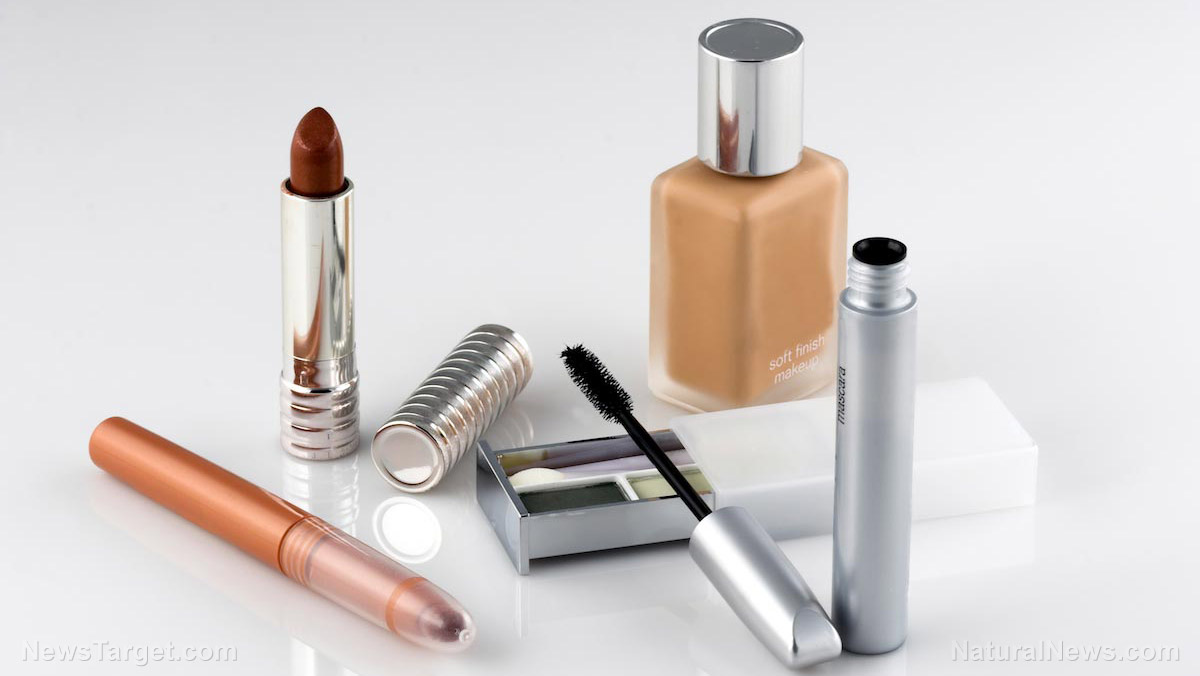
Some of them are intentionally added as ingredients, while others are contaminants. Research has linked exposure to metals to immune, nervous system and reproductive toxicity.
Here is a short list of toxic chemicals found in cosmetics.
Carcinogens
Some of the carcinogenic impurities common to personal care product ingredients include the following:
1,4-dioxane. Research conducted by the Environmental Working Group showed that 22 percent of all cosmetics may be contaminated with a cancer-causing impurity called 1,4-dioxane. (Related: Toxic chemicals in cosmetics are increasingly HARMING consumers.)
The compound 1,4-dioxane is a trace contaminant in some cosmetic products that is a potential human carcinogen. A 2016 report by the Department of Health and Human Services (HHS) National Toxicology Program found that 1,4-dioxane is “reasonably anticipated to be a human carcinogen from studies in experimental animals.
Acrylamide. Polyacrylamide is used as a stabilizer and binder in lotions and other products. Though it is not a concern in itself, it is made up of repeating molecules of acrylamide, which is a strongly suspected carcinogen and has been linked to mammary tumors - campaign for safe cosmetics.
BHA and BHT. BHA (butylated hydroxyanisole) and BHT (butylated hydroxytoluene) are closely related synthetic antioxidants used as preservatives in lipsticks and moisturizers, among other cosmetics.
The use of BHA and BHT in cosmetics is unrestricted in Canada although Health Canada has categorized BHA as a "high human health priority" on the basis of carcinogenicity and BHT as a "moderate human health priority." Both chemicals have been flagged for future assessment under the government’s Chemicals Management Plan.
International regulations are stronger because the European Union prohibits the use of BHA as a fragrance ingredient in cosmetics. The state of California requires warning labels on products containing BHA, notifying consumers that this ingredient may cause cancer.
Formaldehyde. In beauty products, formaldehyde is used as a preservative to prolong shelf life and prevent bacterial contamination, says cosmetic biochemist Stacey Steinmetz.
The International Agency for Research on Cancer and the National Toxicology Program classify formaldehyde as a human carcinogen and it is associated with an increased risk in nasopharyngeal and sinonasal cancers, as well as a type of leukemia says dermatologist Dr. Robyn Gymrek.
Hydroquinone. Hydroquinone is a chemical that bleaches the skin, which people may use if they have a hyperpigmentation skin condition, such as freckles, lentigines or melasma. Those with acne scars may also use hydroquinone-based skin-lightening creams.
Studies have found hydroquinone to cause organ-system toxicity and respiratory tract irritation. In terms of organ-system toxicity, hydroquinone has been linked to a skin condition called ochronosis in which the skin thickens and turns bluish-grey. Exposure of the eye can cause pigmentation and permanent corneal damage.
Nitrosamines. These are impurities that can show up in a wide variety of cosmetic ingredients, including diethanolamine (DEA) and triethanolamine, and products.
Based primarily on animal studies, nitrosamine impurities are probable human carcinogens. This means that long-term exposure to a level above what is considered safe may increase the risk of cancer.
PAHs (polycyclic aromatic hydrocarbons). A petroleum product, petrolatum, can be contaminated with polycyclic aromatic hydrocarbons (PAHs).
According to the David Suzuki Foundation, studies suggest that exposure to PAHs, including skin contact over extended periods of time, e.g., lipsticks, is associated with cancer. On this basis, the European Union classifies petrolatum as a carcinogen and restricts its use in cosmetics. PAHs in petrolatum can also cause skin irritation and allergies.
Ethanolamines
Chemical Safety Facts say that ethanolamines work as cleansing agents or surfactants in personal care products and cosmetics. In these types of products, ethanolamines help remove dirt and oil on skin by dissolving grease and blending other important ingredients.
Made through a chemical reaction of ethylene oxide with ammonia, they may also be known as monoethanolamine (MEA), diethanolamine (DEA) and triethanolamine (TEA).
A scientific article published in the International Journal of Toxicology indicated that ethanolamine and ethanolamine HCl function in cosmetics as pH adjusters. Ethanolamine HCl is also reported to function as a buffering agent.
The Cosmetic Ingredient Revew’s 2012 assessment includes a study, which found ethanolamines to be a cumulative irritant at 5.9 percent in a formulation.
A U.S. study published in the journal Food and Chemical Toxicology: An International Journal for the British Industrial Biological Research Association showed DEA can build up and persist on the skin – with body lotion, hair dye and shampoo containing DEA remaining on the outer layer of the skin for five, 24 or 30 hours.
Parabens
Dermatologist Iris Rubin, a co-founder of SEEN Hair Care, explains that parabens are preservatives used in personal care products to prevent bacteria or fungus from growing in the products, increasing the products’ shelf life.
Dr. Liza Pruett with the U.S. Dermatology Partners adds that you’ll find parabens in everything from shampoo and shower gel to face creams and serums, where they help to keep active ingredients stable, effective and free from harmful bacteria growth, which is especially important in jars and pots that allow for finger-dipping.
According to the U.S. Food and Drug Administration, the most commonly used are butylparaben, ethylparaben, methylparaben and propylparaben.
These ingredients have been around for decades, but their safety has been called into question because they mimic estrogen and one study of about 20 patients found traces of parabens in breast cancer tissue, notes Pruett.
This research paper, published by British scientist Philippa Darbre in the Journal of Applied Toxicology, proved that parabens can pass through the skin barrier and into our bodies. Rubin continues referencing Darbre’s research to say that the main concern is endocrine disruption and its association with breast cancer.
Watch the following video to learn about cosmetics, chemicals and cancer.
This video is from the Eric Dubay channel on Brighteon.com.
More related stories:
Minnesota bans mercury in cosmetics.
Understanding health claims on cosmetics labels.
Cosmetics are more than skin deep.
FDA regulations permit toxins in cosmetics.
Sources include:
Please contact us for more information.























